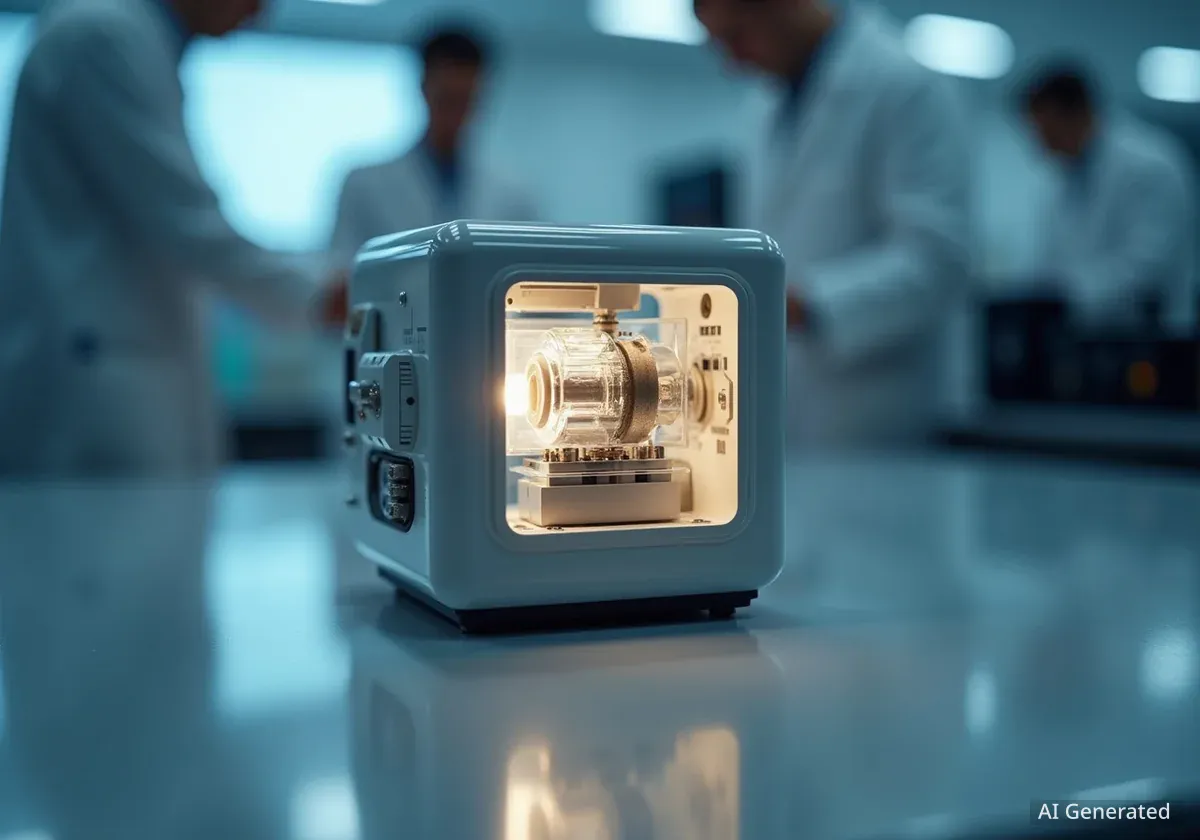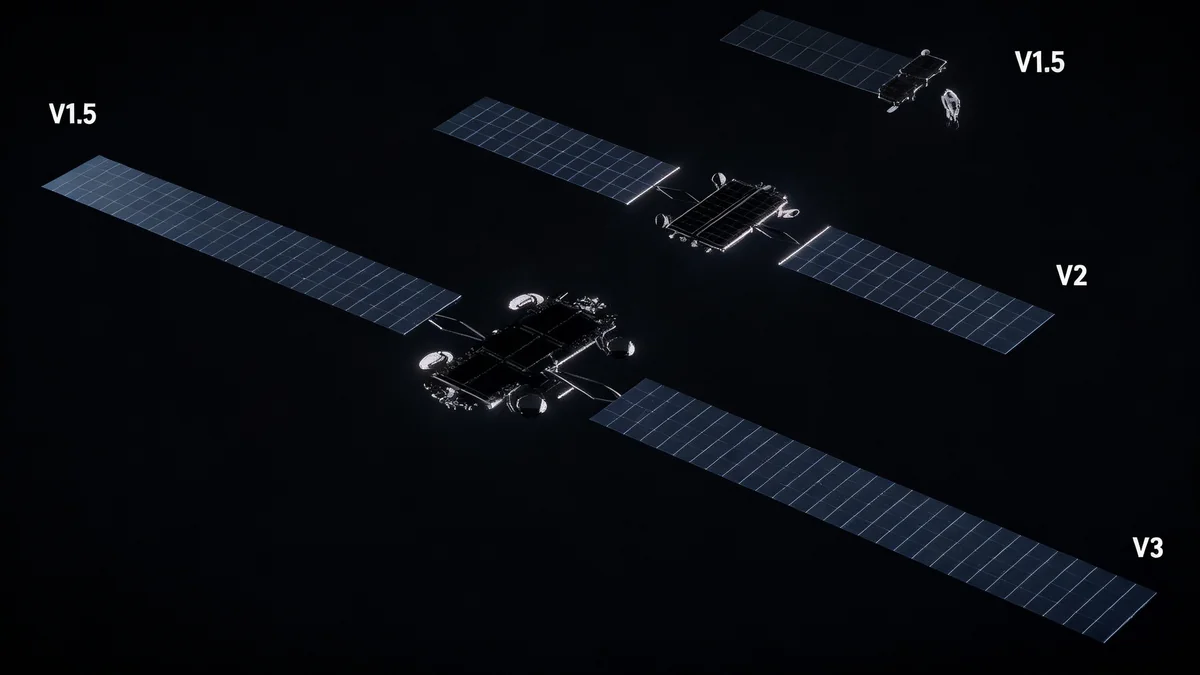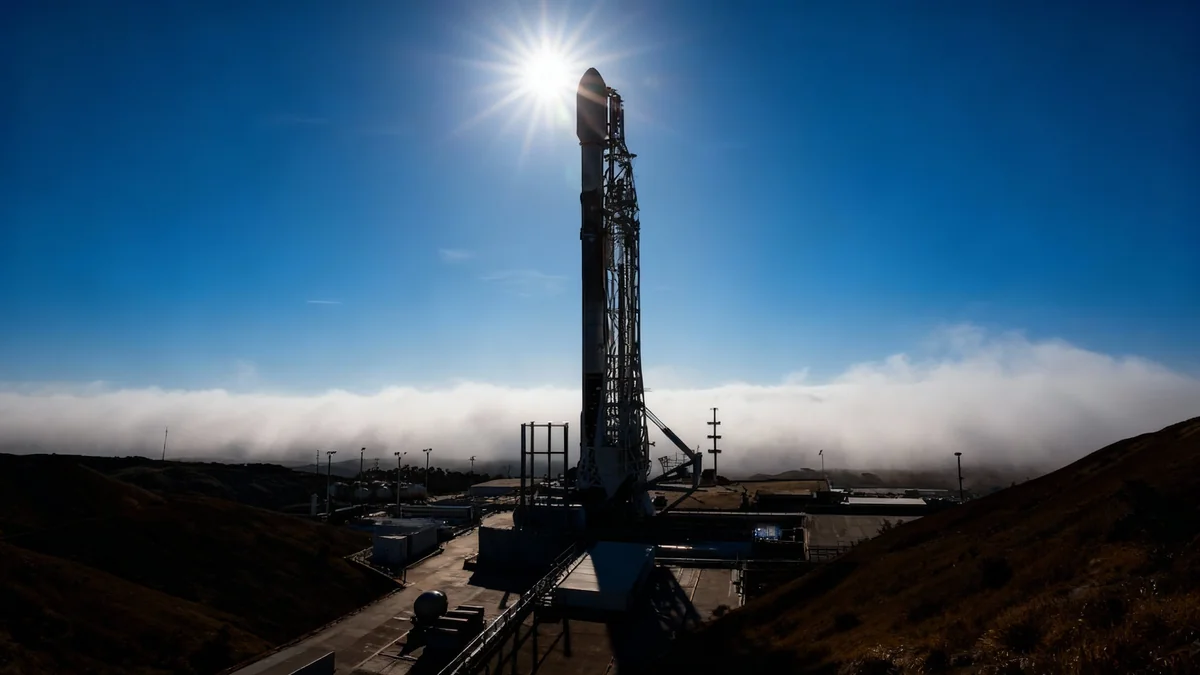The European Space Agency (ESA) has officially inaugurated its fourth deep space antenna, a new 35-meter dish located in New Norcia, Western Australia. The facility, known as New Norcia 3, is designed to enhance communication with missions across the solar system and manage the growing volume of data from scientific and exploration spacecraft.
Key Takeaways
- ESA has inaugurated a new 35-meter deep space antenna, New Norcia 3, in Western Australia.
- The antenna is the fourth in ESA's Estrack network and will significantly boost its data reception capabilities.
- The project, costing approximately €62.3 million, represents a major collaboration between European and Australian space industries.
- New Norcia 3 will support current missions like Juice and Solar Orbiter, as well as upcoming missions, and will enter full service in 2026.
Expanding Europe's Reach into the Cosmos
The European Space Agency has taken a significant step to bolster its deep space communication network with the addition of the New Norcia 3 antenna. Located about 115 kilometers north of Perth, this powerful new instrument joins the existing Estrack network, which is crucial for tracking and communicating with spacecraft on complex missions far from Earth.
The inauguration ceremony on October 4, 2025, was led by ESA Director General Josef Aschbacher and Enrico Palermo, Head of the Australian Space Agency. The event highlighted the strategic importance of the new facility for Europe's autonomy and leadership in space exploration.
"This strategic investment reinforces ESA’s deep-space communication capabilities and maximises the return of our missions' most valuable asset: data delivered from spacecraft voyaging far from Earth," stated Josef Aschbacher. He also noted the strengthening ties between Europe and Australia in the space sector.
A Critical Tool for Current and Future Missions
When it becomes fully operational in 2026, the New Norcia 3 antenna will provide essential support for a wide range of ESA missions. It is set to play a key role in communicating with flagship scientific endeavors currently underway.
Supported ESA Missions
- Current: Juice, Solar Orbiter, BepiColombo, Mars Express, Hera
- Upcoming: Plato, Envision, Ariel, Ramses, Vigil
The increased data download capacity is vital for these missions, which are designed to collect vast amounts of information about our solar system. The antenna ensures that this valuable data can be reliably transmitted back to scientists on Earth for analysis.
Advanced Technology for Faint Signals
The New Norcia 3 antenna is described as the most technologically advanced in the Estrack network. Its design incorporates cutting-edge features to detect the faintest signals from spacecraft that are millions, or even billions, of kilometers away.
A key feature is the use of cryogenic cooling for some of its components. These systems are cooled to approximately -263°C, which is just a few degrees above absolute zero. This extreme cooling dramatically reduces electronic noise, making the antenna sensitive enough to pick up very weak signals from deep space.
For sending commands to spacecraft, the antenna is equipped with a powerful 20kW radio-frequency amplifier. This ensures that instructions can be transmitted reliably across the vast distances of the solar system. The facility also includes highly precise clock and timing systems, which are essential for deep space navigation and communication.
The Estrack Network
Estrack is ESA's global network of ground stations used for communicating with spacecraft. The addition of New Norcia 3 enhances its 24/7 coverage, working in conjunction with other deep space stations in Malargüe, Argentina, and Cebreros, Spain. This geographical distribution ensures that a mission is always in view of at least one station.
During its final calibration phase, the antenna has already proven its capabilities. It successfully received its first signals from the ESA's Euclid spacecraft, confirming its operational readiness for future tasks.
A Symbol of European-Australian Partnership
The construction of the New Norcia 3 antenna is a product of strong international cooperation. The project, which began in 2021, was completed on schedule through a joint effort involving ESA, European industry, and Australian partners.
The total construction cost is estimated at €62.3 million. The Australian Space Agency contributed €3 million towards the project. The construction was co-led by Thales Alenia Space of France and Schwartz Hautmont Construcciones Metálicas of Spain. A significant portion of the budget was invested locally, involving Australian companies such as TIAM Solutions, Thales Australia, Fredon, and Westforce Construction.
Enrico Palermo, Head of the Australian Space Agency, emphasized the benefits for his country. "Australia is well known as a trusted, experienced and capable operator in deep-space communications," he said. "This investment by ESA and the Australian Government will unlock millions of dollars in local economic value as well as employment over the projected lifetime of 50 years."
Fostering International Collaboration
Beyond its primary role for ESA missions, the new antenna will also support international partners. Through cross-support agreements, the facility can be used to communicate with missions from other space agencies, including NASA, JAXA (Japan), and ISRO (India). This collaborative approach enhances scientific returns and operational efficiency for all involved parties.
The New Norcia ground station, first opened in 2003, is operated locally by CSIRO, Australia’s national science agency. CSIRO also operates NASA’s Canberra Deep Space Communication Complex, underscoring Australia's expertise in this field.
More Than Just Deep Space Communication
The New Norcia site hosts more than just deep space antennas. A smaller, 4.5-meter antenna is also located at the station. Its purpose is to track launchers like Vega-C and Ariane 6 after they lift off from Europe’s Spaceport in French Guiana. This antenna acquires critical telemetry data that monitors the performance of the launch vehicles during their ascent.
Additionally, the station is home to a specialized transponder antenna built to calibrate measurements for ESA’s Biomass mission. Launched in 2025, the Biomass satellite will survey Earth's forests, and it will periodically communicate with this transponder over its five-year mission.
In developing the site, ESA has acknowledged the traditional custodians of the land, the Yued people of the Noongar nation, paying respect to their continuing connection to the area.





